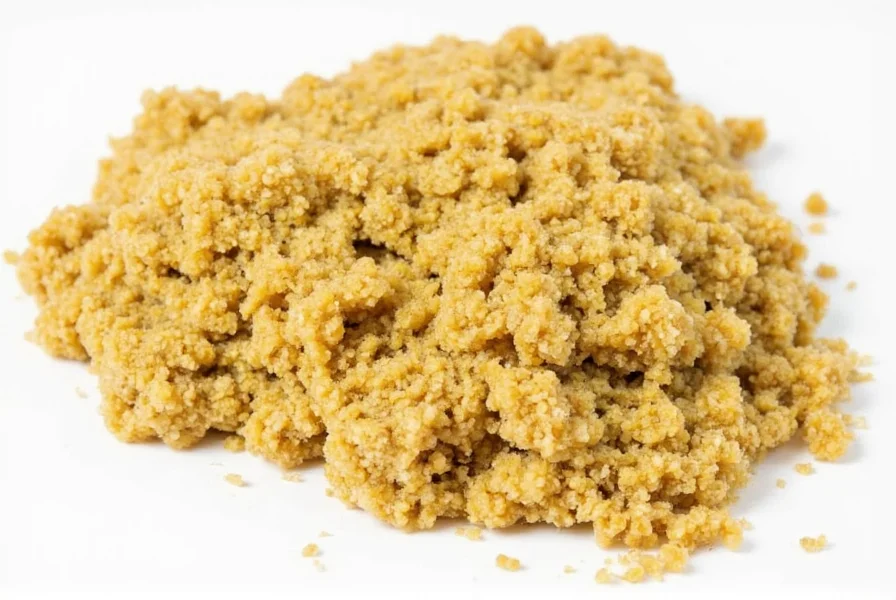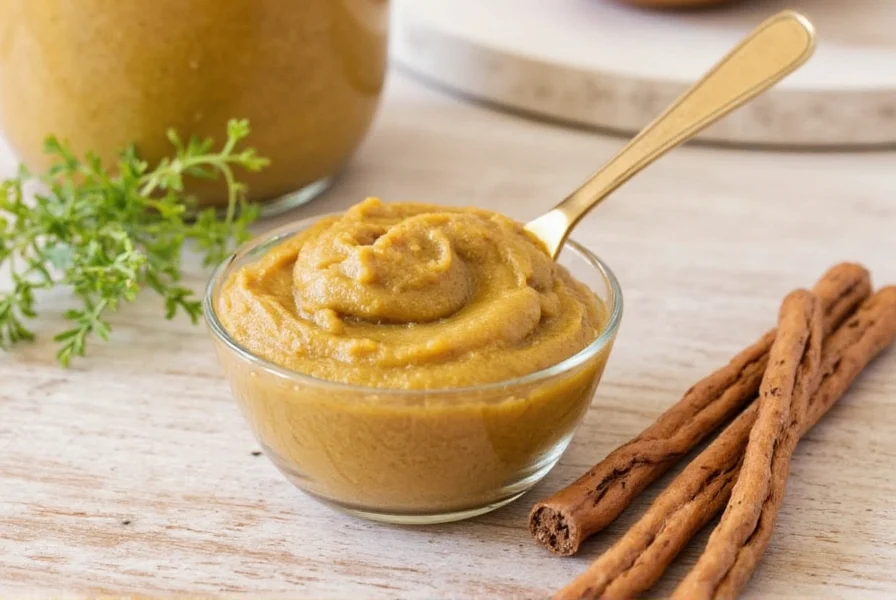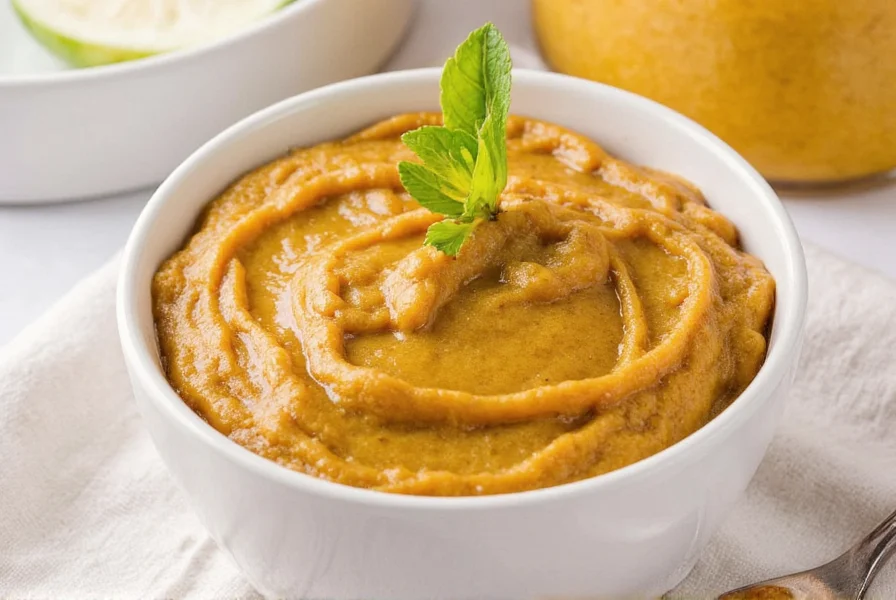Brown mustard (Brassica juncea) stands apart from common yellow mustard through its distinctive pungency and culinary versatility. Unlike Sinapis alba (yellow mustard seeds), brown mustard seeds contain significantly more sinigrin—the compound responsible for that characteristic sharp heat that intensifies when mixed with liquid. This scientific distinction explains why brown mustard varieties deliver that signature kick beloved by chefs and home cooks seeking bold flavor profiles.
What Makes Brown Mustard Unique
The difference between brown mustard and yellow mustard begins at the seed level. Brown mustard seeds are smaller, darker, and contain 2-3 times more pungent compounds than their yellow counterparts. When these seeds are ground and mixed with vinegar or other acidic liquids, enzymatic reactions release allyl isothiocyanate—the same compound found in horseradish—creating that distinctive sinus-clearing heat.
Unlike yellow mustard which mellows during cooking, brown mustard maintains its complexity even when heated, making it ideal for:
- Robust marinades for meats
- Signature sandwich spreads with depth
- Traditional Indian rai tempering technique
- Complex salad dressings that hold up to greens
| Mustard Type | Seed Variety | Heat Level (1-10) | Best Culinary Uses |
|---|---|---|---|
| Brown Mustard | Brassica juncea | 7-8 | Marinades, hearty sandwiches, cooking applications |
| Yellow Mustard | Sinapis alba | 2-3 | Cold cuts, hot dogs, mild dressings |
| Dijon Mustard | Brassica nigra (traditional) | 5-6 | Sauces, vinaigrettes, finishing applications |
Culinary Applications Across Global Cuisines
Brown mustard's versatility shines across international cooking traditions. In Indian cuisine, whole brown mustard seeds (rai) undergo tadka—a tempering process where seeds crackle in hot oil, releasing nutty aromas that form the flavor foundation for dishes like sarson da saag. The seeds' high oil content (30-35%) creates rich, complex notes impossible to replicate with pre-ground mustard.
European traditions leverage brown mustard differently. Traditional German Mittelscharfer Senf combines brown mustard seeds with coarsely ground texture for sandwich applications, while American "spicy brown" varieties like Gulden's use vermouth for added complexity. The key difference between brown mustard and Dijon lies in seed type and preparation—authentic Dijon uses black mustard seeds (Brassica nigra), though many commercial "Dijon" products substitute brown seeds for cost reasons.

Nutritional Profile and Practical Benefits
Nutritionally, brown mustard seeds offer notable advantages over processed yellow mustard. Per tablespoon, brown mustard paste contains:
- Approximately 5 calories (vs. 3 in yellow mustard)
- 15mg omega-3 fatty acids from natural seed oils
- Trace minerals including selenium and magnesium
- Glucosinolates with potential antioxidant properties
When considering brown mustard nutritional benefits, the intact seed structure matters. Whole brown mustard seeds retain more beneficial compounds than pre-ground versions, which is why many chefs prefer making brown mustard from scratch. The heat generation process actually enhances certain bioactive compounds—a phenomenon known as the "mustard oil bomb" effect where enzymatic reactions increase beneficial phytochemicals.
Practical Cooking Applications
Understanding how to use brown mustard in cooking separates novice from experienced cooks. Unlike yellow mustard which primarily adds tang, brown mustard contributes three-dimensional flavor:
- As a meat tenderizer – The enzymes in brown mustard break down proteins more effectively than yellow varieties
- In emulsions – Its higher mucilage content creates more stable vinaigrettes
- For flavor layering – Add at different cooking stages for varying intensity levels
For the best results when substituting brown mustard for yellow mustard, use a 2:3 ratio (two parts brown to three parts yellow) plus a touch of honey to balance the increased heat. When making your own spicy brown mustard recipe, soaking the seeds overnight in apple cider vinegar before grinding yields optimal texture and flavor development.

Creating Authentic Homemade Brown Mustard
Commercial brown mustards often contain unnecessary additives. A superior homemade version requires just four ingredients:
- 1 cup brown mustard seeds (50% whole, 50% coarsely ground)
- 1 cup apple cider vinegar (minimum 5% acidity)
- 1/4 cup water
- 1 tablespoon honey or maple syrup
Combine ingredients and let sit for 24-48 hours before using—this crucial resting period allows enzymes to develop complex flavors. The difference between fresh and aged brown mustard becomes apparent after 14 days, when the initial sharpness mellows into a more rounded, complex profile. Store in airtight containers for up to 6 months; the natural preservative qualities of mustard prevent spoilage when properly prepared.
Frequently Asked Questions
What's the primary difference between brown mustard and yellow mustard?
The key difference lies in the seed variety and resulting flavor profile. Brown mustard uses Brassica juncea seeds containing higher sinigrin levels, creating significantly more heat and complexity than the Sinapis alba seeds in yellow mustard. Brown mustard also maintains its flavor better during cooking applications.
Can I substitute brown mustard for Dijon in recipes?
Yes, but with adjustments. Authentic Dijon uses black mustard seeds (Brassica nigra), while most commercial "Dijon" uses brown seeds. When substituting brown mustard for Dijon, use a 3:4 ratio (three parts brown mustard to four parts Dijon) and add 1/4 teaspoon white wine per tablespoon to approximate Dijon's characteristic flavor profile.
Why does brown mustard get hotter over time?
Brown mustard's heat increases initially due to enzymatic reactions between myrosinase enzymes and glucosinolates in the seeds. This peaks around 24-48 hours after preparation. Properly stored, the heat then gradually mellows over 2-3 weeks as compounds stabilize, creating a more balanced flavor profile ideal for most culinary applications.
What are the best food pairings for brown mustard?
Brown mustard complements robust flavors exceptionally well. It pairs perfectly with smoked meats, sharp cheeses like aged cheddar, roasted root vegetables, and hearty sandwiches. Its complexity stands up to bold ingredients like garlic, horseradish, and smoked paprika. For unexpected pairings, try it with roasted apples or pears to balance its heat with natural sweetness.











 浙公网安备
33010002000092号
浙公网安备
33010002000092号 浙B2-20120091-4
浙B2-20120091-4